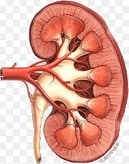
Transactions in the pharma sector: Through the EU merger review looking-glass
pharmafile | October 31, 2019 | Feature | Business Services, Manufacturing and Production, Medical Communications, Research and Development, Sales and Marketing | mergers, mergers and acquisitions, pharma
With mergers and acquisitions back in full swing after a period of drought, Alec Burnside (Partner) and Delphine Strohl (Associate) of global law firm Dechert review and evaluate investigations of M&A activity to determine what this reveals about the industry as it moves forward.
“At least I know who I was when I got up this morning, but I think I must have been changed several times since then.” – Lewis Carroll, Alice in Wonderland.
The pharmaceutical industry is dynamic when it comes to mergers and acquisitions. According to the Dechert Antitrust Merger Investigation Timing Tracker (DAMITT), the pharmaceutical sector represented 12% of significant merger investigations in the European Union and 28% in the United States. For this purpose we treat an EU investigation as “significant” if it required concessions as the price of a clearance after the initial phase of procedure, so-called Phase 1, or if it required examination in the longer Phase 2. DAMITT takes an equivalent approach in the US, allowing for the different procedures there.
As a consequence, the EU Commission has reviewed many cases and developed a well-established body of decisions demonstrating how markets are defined and assessed in the pharmaceutical sector. This track record facilitates advance consideration of candidate deals and allows the review process to go more quickly than often seen in other sectors. However, the duration of pre-notification discussions (i.e. the preparatory dialogue before formal filing occurs) should not be overlooked, and new developments in the Commission’s decisional practice should warrant some caution from pharmaceutical companies contemplating acquisitions.
Merger review timetable: Early is on time
The established framework for the antitrust assessment of pharmaceutical mergers enables companies contemplating a merger to assess more easily the feasibility of the transaction and remedies potentially needed for a transaction to get the Commission’s approval. However, in any case, a merger filing is always a complex exercise and early preparation is necessary.
This is particularly true for pharmaceutical mergers since when they are assessed at the EU level, they are less likely to qualify for the so-called “simplified procedure” and will usually warrant a complete Phase 1 review. For instance, since 2011, less than 30% of mergers classified as pharmaceutical by the Commission qualified for the simplified procedure, compared to more than 70% of mergers generally. However, all pharmaceutical deals, even complex ones, usually manage to go through following a Phase 1 assessment, so escaping a lengthy Phase 2 review. Over the time period tracked by DAMITT, i.e. since 2011, all “significant” mergers in the pharmaceutical sector – excluding medical devices mergers – were cleared with remedies following a Phase 1 review.
But the unseen part of the iceberg is the vast amount of work to be done before a notification is ready to be formally submitted, i.e. the duration of the pre-notification discussions with the Commission. Although according to DAMITT the formal review of a significant merger undergoing a Phase 1 review lasts on average 1.7 months, which is consistent with the Commission’s legal time limit of 35 working days, pre-notification discussions add on average 5.8 months to the review process. For significant pharmaceutical mergers, DAMITT statistics show that from announcement to clearance, the review takes on average 7.3 months. By comparison, transactions having to go through a Phase 2 review – as is often the case in other industries – take on average 12.3 months. In the US, investigations of significant mergers in the healthcare and pharmaceutical sector are approximately in line with the average duration of review cross-industry at 8.7 months on average.
Market definition: Drugs of a feather flock together
Two products are found to belong to the same relevant market when they can be viewed as substitutable by the consumer. According to the Commission’s decisional practice, the relevant product market in the pharmaceutical sector is usually defined based on the Anatomical Therapeutic Classification (ATC) developed by the European Pharmaceutical Market Research Association. More specifically, in mergers involving two originator companies, the Commission will usually define the market at the ATC3 level, i.e. specific therapeutic indications, although it can sometimes adopt a more narrow market definition based variously on dosage, pharmaceutical form and route of administration. When a transaction involves an originator and a generic company, or is between two generic players, the Commission tends to look at the market more narrowly, at the ATC4 level or even at the level of the molecule. Generics are usually found to belong to the same relevant market as the originator product; the same is true to a certain extent for bio-similar drugs. The Commission also usually distinguishes between prescription and over-the-counter medicines and may take into account national reimbursement schemes when assessing substitutability.
From a geographic standpoint, markets are usually defined as national in scope.
Competitive assessment: Off with their overlaps!
Once the relevant market(s) are defined, the Commission will assess whether the merger could lead to a reduction of competition on those markets. When a horizontal merger gives rise to a high number of affected markets, i.e. markets on which the parties are competitors or potential competitors, the Commission tends to identify the most problematic markets using the parties’ combined market shares, the increment in market shares following the merger and the number of competitors remaining on the market following the merger.
One key feature of merger control to keep in mind is that the Commission’s assessment is not limited to products that are already on the market; it also takes into account products that are still in development. The Commission will assess whether the merger eliminates competitive constraints likely to be exerted by pipeline products, offering future competition to products already on the market. Similarly, it asks itself whether the deal may lead to the discontinuation of research programmes in light of the other party’s competing pipeline/marketed products.
Seeing clearly as to future market entry is a tough job for the commission, but facilitated in the pharmaceutical sector by the existence of familiar procedures for product authorisation which lead to a well-understood pipeline of products to be expected in the future. This makes it easier to identify future market entry of a competing product at an early stage and its degree of probability. It must be noted that the Commission looks at future markets, i.e. competition with or between pipelines products, more broadly, at least EEA-wide.
Going down the innovation hole?
Where originally the Commission limited its attention to pipeline products having reached Phase 3 of clinical trials, since 2015 the Commission started also considering products still at earlier stages (Phase 2 or even Phase 1) – see for example the Novartis/GSK Oncology Business merger. More recently, the Commission went even further back before the pipeline so as to examine competing research capabilities of the merging parties, in so-called “innovation spaces”. This approach has been seen to date particularly in the agrochemical industry (Dow/DuPont; Bayer/Monsanto), but the principles would also be applicable to the pharmaceutical sector. In these cases, the Commission required divestment of entire research and development facilities, not linked to specific overlapping products but by reference to more nebulous innovation spaces.
Pharmaceutical companies planning a merger with (or an acquisition of) a strong competing innovator should therefore be cautious and seek early legal advice when preparing the deal, as required remedies could now exceed the simple divestment of a product line. Moreover, the increased interest of competition authorities in so-called “killer acquisitions”, i.e. an incumbent firm acquiring an innovative target so as to remove the threat of disruptive competition, mostly observed in the tech sector but also seen in the pharmaceutical sector, should warrant caution from incumbent pharmaceutical companies.
Internal documents: Avoiding white rose-trees
These recent cases also emphasise the vital importance of both external and internal documents in the Commission assessment. Dow/DuPont for instance is a cautionary tale of claims made in investor presentations being turned against the parties in the Commission’s assessment of a merger – in that instance, claims regarding cost-savings through elimination of overlapping R&D. The Commission also calls in and heavily relies on the parties’ internal documents to assess closeness of competition and the impact of the merger on competition. To mitigate risks, company executives should be schooled in the principles of good business writing. Sensitive matter can still be discussed candidly of course, but doing so with external counsel offers the opportunity to do so with the shield of legal privilege.
Related Content

FDA approves IMIDEX’s AI-powered device VisiRad XR
The technological pharmaceutical company IMIDEX has been granted clearance from the US Food and Drug …

Artiva Biotherapeutics announces FDA clearance of IND for AlloNK and Rituximab combo
On 16 August 2023, the US Food and Drug Administration (FDA) officially cleared Artiva Biotherapeutics’ …

Novartis acquires Chinook Therapeutics for $3.5bn
Swiss pharmaceutical company Novartis has entered into an agreement and plan of merger with US-based …








